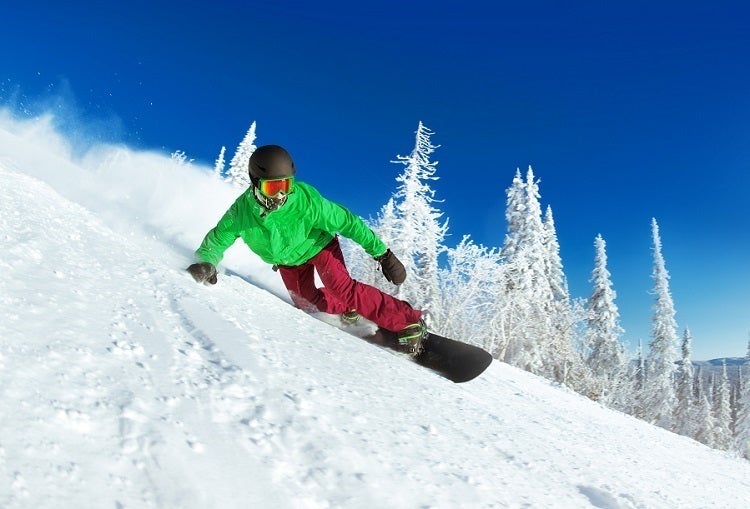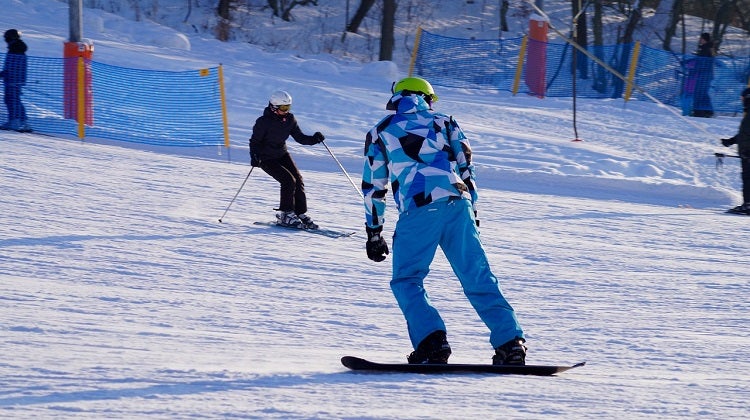
Our Editors independently research, test, and rate what we feel are the best products. We use affiliate links and may receive a small commission on purchases.
Snowboarding is one of the most thrilling new sports you can learn to participate in today. It’s easier and quicker to get started snowboarding than many people realize.
Today I’m going to help you learn how to get started snowboard, what gear to choose, and guide you on your journey to snowboarding. With over 500 days teaching alpine snow sports over the last 6 seasons, I know what it takes to enjoy the mountains!
We’re going to talk about a whole range of gear, tips, and tricks that you’ll need to start snowboarding today. What really matters when you’re trying to get started snowboarding?
We’ll focus on these topics so you can have a real understanding of what to spend your time and money on as you enter this awesome new action-packed world!
Essential Gear For Snowboarding
This is the first thing most people think of when it’s time to get started snowboarding. While gear is important, it’s not the only consideration.
We’ll talk about a few other things you’ll want to keep in mind as we go. But, to get started, let’s examine a few critical pieces of gear for the aspiring shredder.
Snowboarding Helmets
We might as well learn to walk before we learn to board – so to speak. Buying a good helmet is almost a prerequisite for snowboarders. Today we push our limits and our speed harder than ever on the mountain. Thanks to helmets, we’re keeping our noggins in one piece as often as possible.
When buying a helmet, I highly encourage you to try on several at a pro shop. Most manufacturers have a specific sizing and shape that will work differently for everyone.
For instance, Giro helmets fit my head like a glove while Smiths are too short and wide. Even with adjustable suspensions, a helmet that won’t fit the shape of your head will do you no good.
Spend a little extra up front to get a helmet that fits and feels good. You’ll be glad you did! Most snowboarders will notice the painful and negative effects of a cheap helmet much sooner than they notice the effects of a cheap snowboard.
Goggles
Another critical piece of gear that makes even more difference than a good snowboard. For a couple hundred bucks you can get a pair of goggles that will perform perfectly for many seasons to come.
Cheap goggles will fog, distort your vision, or lack proper lenses to protect your eyeballs from that nasty mountain sun.
One of the best advantages of newer goggles is an increased field of view. Large goggles are trendy not only because they look darn cool – they’re also just plain helpful!
If you haven’t upgraded to a wide-angle lens, you’re missing out on a lot! You can thank me later. I highly recommend the Smith IO/X goggles. I used them every day for several seasons and they never let me down!
Snowboarding Backpacks
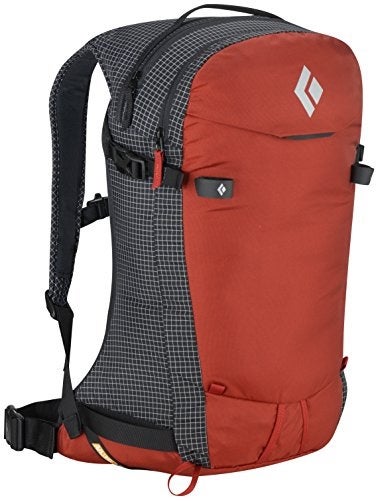 There’s a lot of wiggle room on this one. Do you really need a snowboard backpack? Well, that really depends on how you’re going to use it.
There’s a lot of wiggle room on this one. Do you really need a snowboard backpack? Well, that really depends on how you’re going to use it.
If you’re planning to snowboard primarily at the resort you may want to consider a boot bag, or specifically a snowboard travel bag. These have room for your snowboard boots, helmet, snacks, jacket, etc.
They’re used to carry your gear from the car to the locker room so you can change without having to wear all your stuff back and forth. They are, of course, more popular among skiers whose boots are much more inconvenient.
For backcountry snowboarders, you may want to consider an avalanche safety backpack. These can come with all sorts of advanced avalanche safety features.
You may also opt for a simple backpack with just enough room for your shove and probe with a few snacks. This can also be a good pack for carrying some munchies around the resort for the day!
If you want to know more about snowboard backpacks, see our in depth guide to snowboard backpacks here! (insert link)
Snowboard Gloves
A day on the snow is only as good as your gear. That’s really all there is to it! I can’t tell you how many time my day has been interrupted by cold hands and poor glove performance.
In most situations, it’s the cold you’ll need to deal with – not water. Except for spring skiing, snow conditions are usually quite dry.
So, what’s to be done? Look for mittens or lobster claw (two finger) gloves. These keep your digits in less pockets, thereby conserving that precious finger warmth.
Mittens are ideal unless you’re really in need of the use of all of your fingers for some reason. I find that I rarely need the dexterity of a glove and the added bulk lacks dexterity anyways.
Another great feature for snowboarding gloves is a removable inner liner. Be sure to pull this out at night and toss it on the heat vent to dry it out. Having a dry glove at the start of each day is the key to having warm, happy fingers all day on the hills.
Jackets and Pants
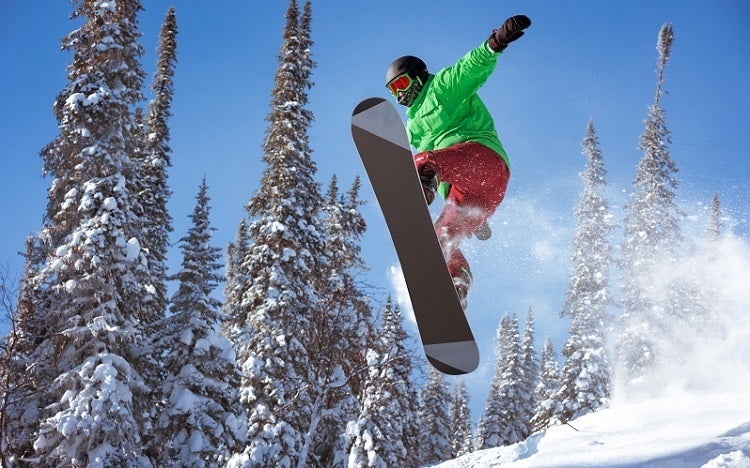
If your cold out there on the slopes you are going to be miserable. Your jacket and pants are important, don’t skimp. Your best bet for a snowboard jacket is a modular 3-1 jacket.
These snowboard jackets have a removable liner, usually fleece that can be removed and allowing you to use just the shell for warmer spring skiing. In colder weather it may be necessary to use base layers under regular jackets and pants.
Your pants are not quite as important but still you want to make sure you get pair of snowboard pants that will keep you warm and dry. Look for pants that are at least water resistant, preferable waterproof.
Getting a pair of cargo snowboard pants with lots of pockets that give you room to keep your phone and some snacks is something you should look for.
Choosing a Snowboard
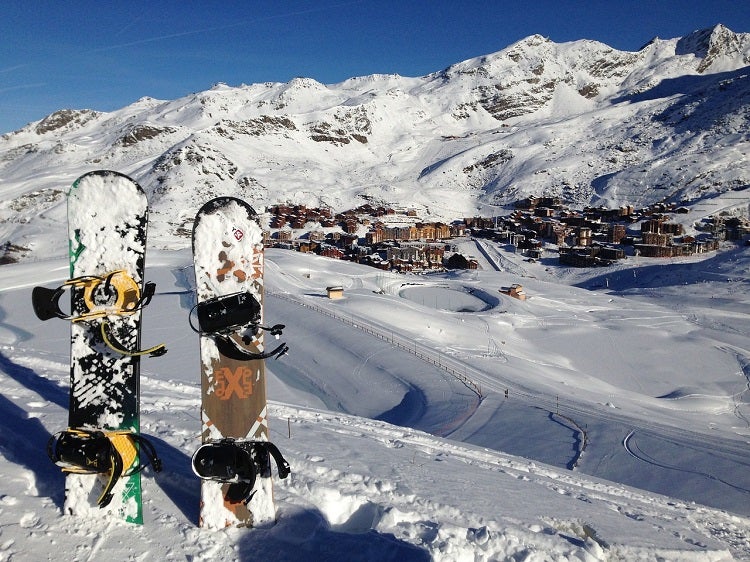
Most people will be tempted to go all out on buying their board. I’m going to suggest that you keep it moderate to low end. Why? Because many beginner snowboarders won’t stick with it.
Often, you’ll only have time to snowboard a few times a year, even if you do stick with the sport. If that sounds like it could be you, then keep your snowboard expense a little lower.
It will take years of practice before you’ll even be good enough to notice the difference between an entry level board and an expert board anyways.
If you’re already certain that you’re in love with the sport and plan to spend tons of time on the mountain you may want to go with a moderate or high-end board.
Remember, there are tons of different boards:
- Split boards for backcountry touring
- Powder boards for deep soft snow
- Park & freestyle snowboards for tricks and aerial work
- Womens snowboards specifically for women’s anatomies
- Freeride boards for ripping up the hard-packed groomers and going fast
- All mountain boards for a little taste of everything
Your snowboard must be sized to you before you choose one! The width of the board, to some degree, must be determine by the size of your boots and bindings.
Length and shape of the board are dependent on where and how you’ll be snowboarding. If you’re not sure exactly where to start or what’s best for you, go to a pro shop.
Your tastes may evolve over time. For instance, it seems that every year I learn to love a new aspect of skiing. Some years I like powder, others I love ripping up the groomers.
That’s why an all mountain setup can be the best choice for many beginners. Who knows where your passion will take you?
Boots and Bindings
Again, this is an area that’s always best done in person at a pro shop where you can be measured and fitted. Snowboard boots must be sized to fit properly or you’ll have blisters, sores, and discomfort after only a few hours of snowboarding.
At the very least you should go and get fitted for the make and model of boot that you’ll want to buy. Then you can shop around a bit.
Most pro shops will price match and since they took the time to measure you, you should at least offer them your business as a matter of politeness.
Most beginner snowboarders will be best served by purchasing a snowboard package that comes with bindings. You may still need the help of a pro shop to mount your bindings (don’t try mounting them yourself).
Trying to buy separate snowboards and bindings makes all sorts of hassle that’s ultimately not worth it. Instead find a package deal from a reputable maker like Burton.
Learning to Snowboard
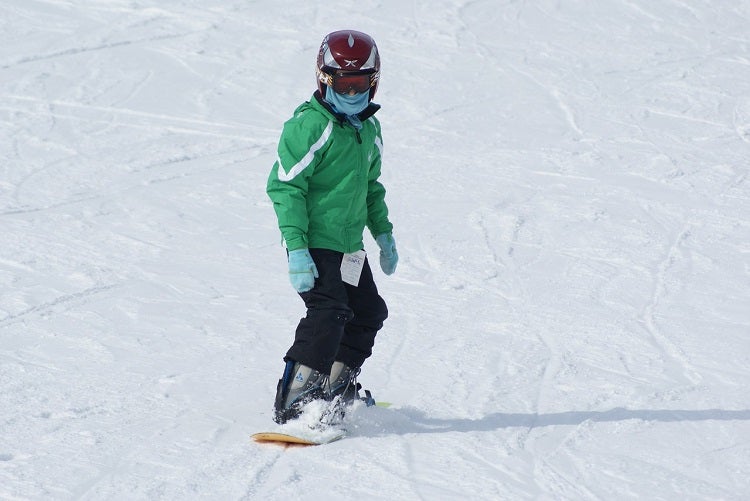
Let’s be honest – reading an article online is not the right way to learn to snowboard. However, there are a few tips I have for you when you’re getting started.
- Don’t let your friends talk you into trying things that are above your ability. You could injure yourself or another person on the mountain by being out of control.
- Learn the snowboarder’s responsibility code and abide by it.
- Take at least one lesson from a skilled instructor. Don’t just go out with a buddy. Learning from a patient, trained instructor will help you understand how to get started and what to work on in a structured and controlled environment.
- Snowboarding, just like skiing, is about skills not hills. It’s not about how big or fast the hill is that you’re snowboarding on. What really matters, and what’s most impressive, is the level of skill you master while snowboarding even the simplest slopes.
Is it possible to learn to snowboard on your own? Yes. However, there are rules, etiquette, and general tips of staying safe and enjoying the mountain that you’re unlikely to learn on your own.
As a long time instructor, I’ve seen a lot of people make a lot of funny mistakes. I’ve also seen a lot of people put themselves, and others, in an ambulance on their first day.
It’s never funny to injure a fellow snowboarder.
If you’re going to learn backcountry snowboarding, be sure to take an approved avalanche awareness class. Heading into the backcountry without fully understanding the potential dangers around you can be a recipe for disaster.
It takes skill and training to learn to use your avalanche safety gear effectively and swiftly. If it’s you under the snow, you’d want your friends to be able to rescue you safely and quickly.
Video: 10 Beginner Snowboard Skills to Master.
The same should be said of all members of your party. You owe it to your friends to be avalanche trained before learning backcountry snowboarding.
For terrain park boarding (you know, doing cool tricks) you’ll definitely want to take a few lessons. SMART style boarding is important both to your own safety and learning, as well as being courteous and respectful of those around you in the terrain park.
Most of us have to go to our day jobs in the morning, so do yourself a favor and take a lesson so you can get started without breaking your face.
Finding a Good Beginner Resort
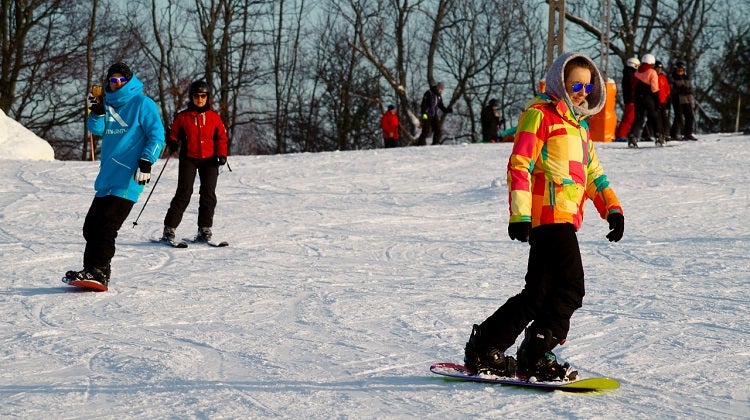
As a brand-new snowboarder, you can save yourself a lot of time and money by finding somewhere cheap to learn. Many resorts offer beginner-only passes which allow access to the bunny hill or several beginners runs for a discounted rate.
Passes are almost always cheaper before the Christmas rush as well. Consider getting a few days on your board prior to December 20th each year for a discounted rate. Snow quality won’t be as good as mid or late season, but tickets are cheaper.
As a beginner, I would prioritize finding a resort close to home that’s less busy and has reasonable rates. Often you can find season passes to small resorts for a few hundred dollars – compared to a few thousand dollars for big name resorts.
A note for beginners looking to shred the gnar (as they say) is that you may want to put off traveling until your second season. Flying out to a nice resort can be tons of fun!
You may want to wait until you’re a confident intermediate snowboarder before traveling, however. If you’re only able to snowboard green runs, you’ll only be able to enjoy 10% of what most large resorts have to offer.
Traveling to new resorts is most enjoyable, and you’ll get the most for your money, as an intermediate or advanced snowboarder. This is the level where a full 60-80% of most resorts’ terrain lies.
Conclusion
Learning to get started snowboarding is a process that just simply takes a while. It may take you 10 – 20 visits to the mountain before you start to feel as if you’re “getting the hang of it”. From there it’s a lifelong process of refinement and continual learning.
Remember that it’s not necessary to buy the most expensive or newest gear. If you’re going to shell out top dollar for something, save it for your goggles and helmet. Go with a used or mid-range snowboard and upgrade as you become more experienced.

